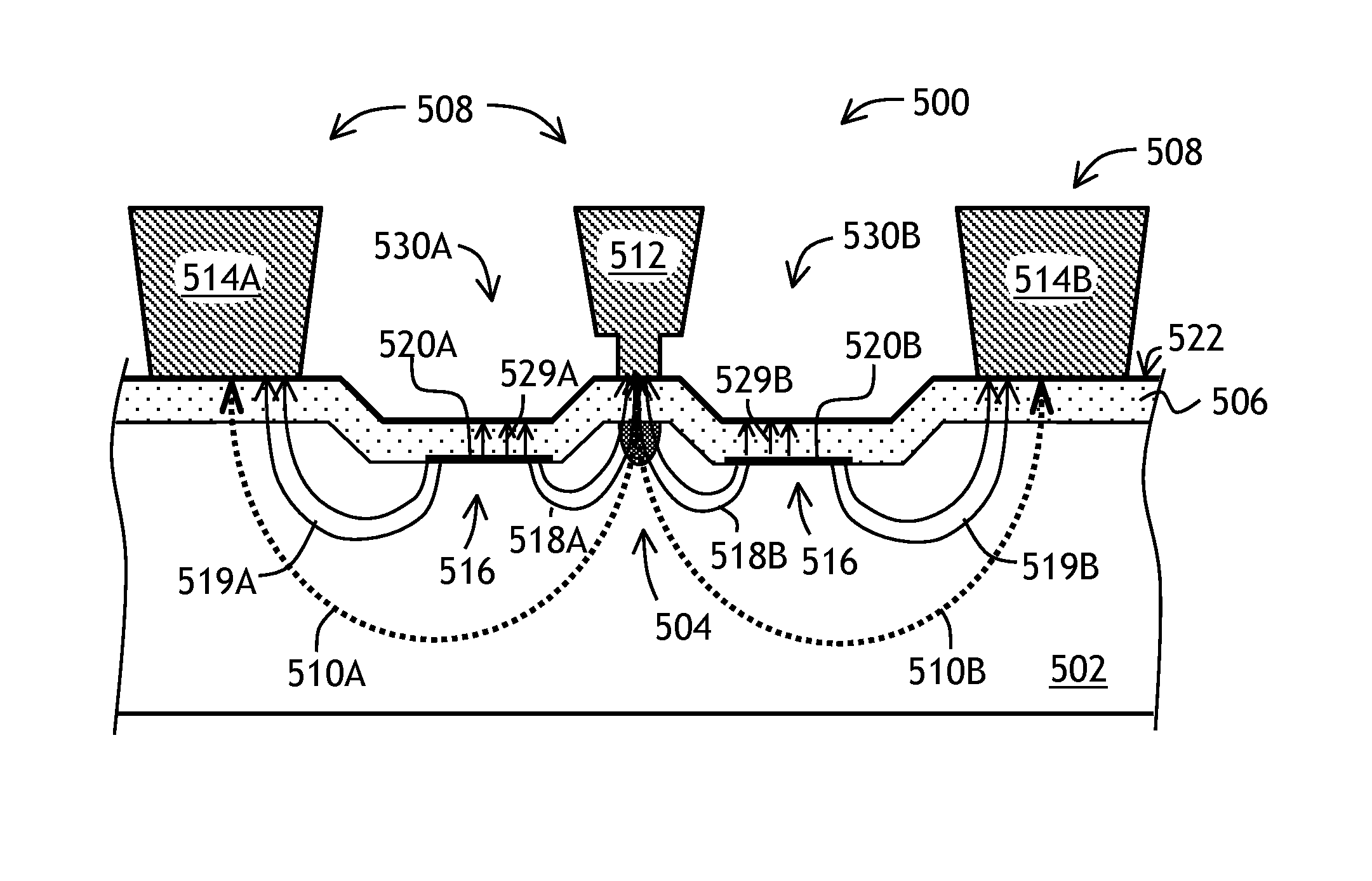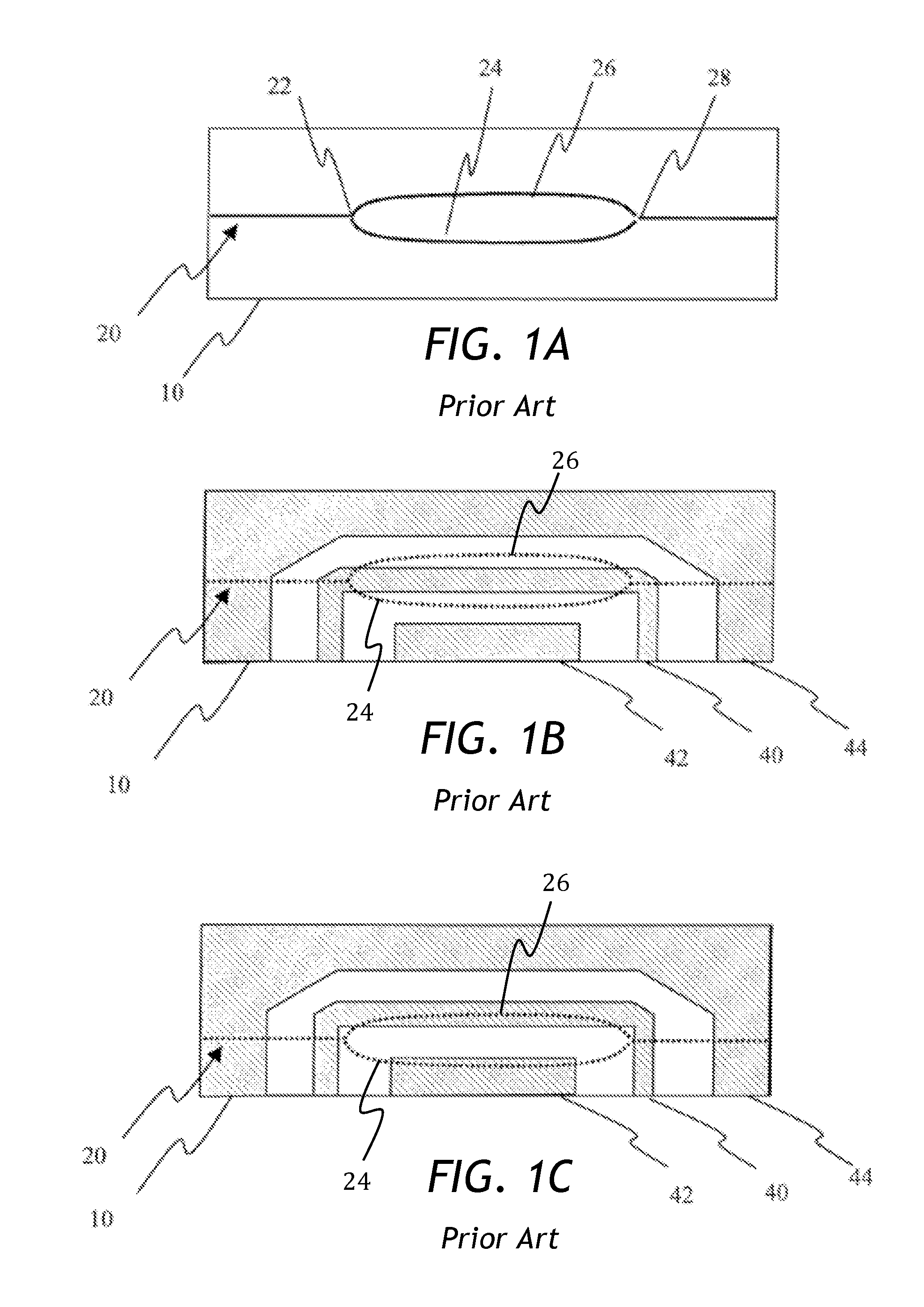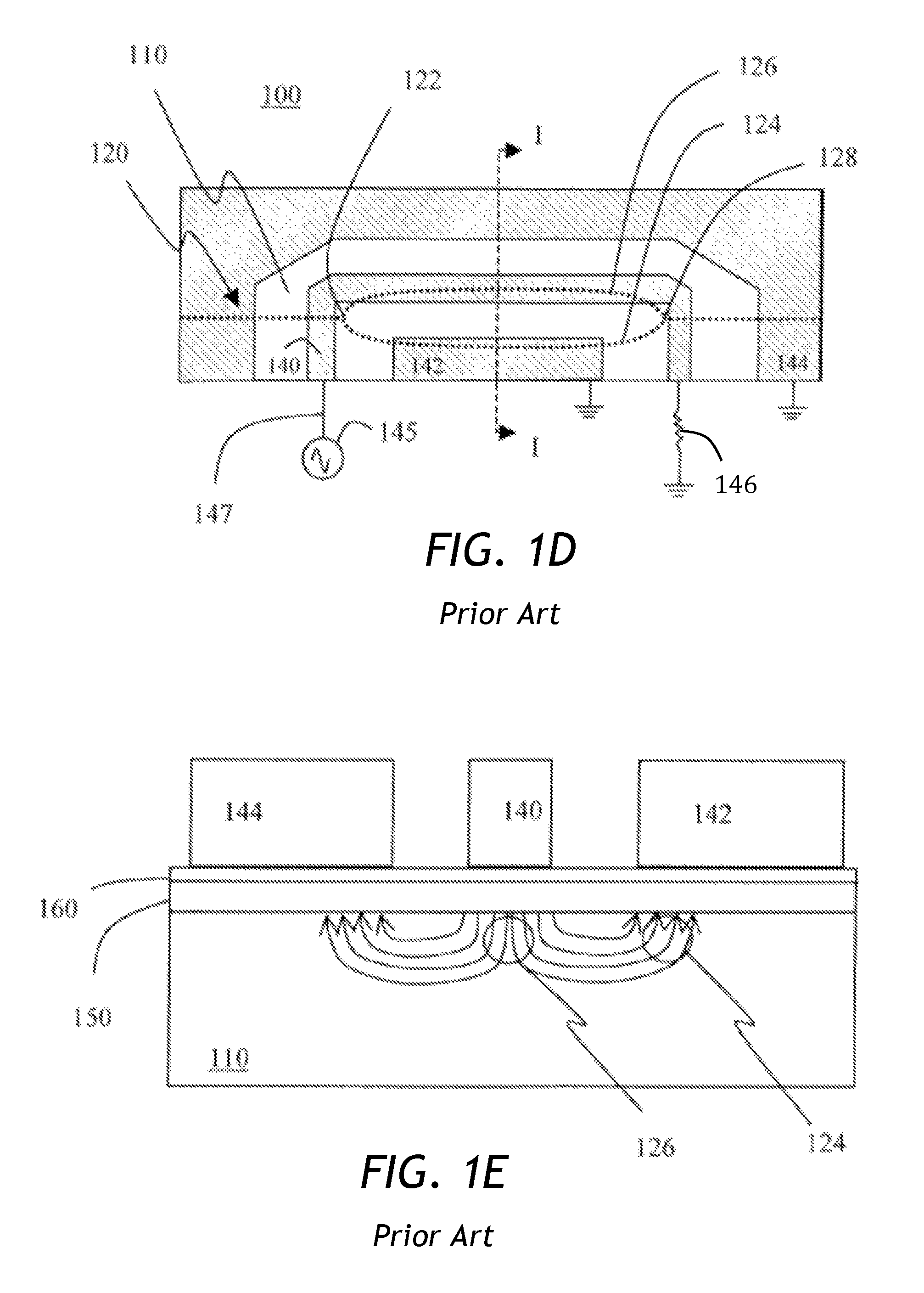Electro-optic device
a technology of optical devices and optical polarization, applied in the field of optical polarization devices, can solve the problems of reducing the efficiency of optical polarization, and reducing the loss of so as to improve humidity resistance and reduce optical polarization and rf wave propagation. the effect of loss reduction
- Summary
- Abstract
- Description
- Claims
- Application Information
AI Technical Summary
Benefits of technology
Problems solved by technology
Method used
Image
Examples
Embodiment Construction
[0056]While the present teachings are described in conjunction with various embodiments and examples, it is not intended that the present teachings be limited to such embodiments. On the contrary, the present teachings encompass various alternatives, modifications and equivalents, as will be appreciated by those of skill in the art. In FIGS. 5 to 12, similar numerals refer to similar elements.
[0057]Referring to FIG. 5, an optical modulator 500, according to the present invention, includes a Z-cut electro-optical crystal substrate 502, e.g. LiNbO3 or other suitable material, having an optical waveguide 504 formed therein, a buffer layer 506 disposed over the substrate 502 in at least a partial contact with the substrate 502, an RF electrode structure 508 disposed over the buffer layer 506, and a buried bias electrode structure 516 disposed on the substrate 502 under the buffer layer 506. The RF electrode structure 508 includes a shaped RF signal electrode 512 disposed substantially p...
PUM
| Property | Measurement | Unit |
|---|---|---|
| thickness | aaaaa | aaaaa |
| thickness | aaaaa | aaaaa |
| thickness | aaaaa | aaaaa |
Abstract
Description
Claims
Application Information
 Login to View More
Login to View More - R&D
- Intellectual Property
- Life Sciences
- Materials
- Tech Scout
- Unparalleled Data Quality
- Higher Quality Content
- 60% Fewer Hallucinations
Browse by: Latest US Patents, China's latest patents, Technical Efficacy Thesaurus, Application Domain, Technology Topic, Popular Technical Reports.
© 2025 PatSnap. All rights reserved.Legal|Privacy policy|Modern Slavery Act Transparency Statement|Sitemap|About US| Contact US: help@patsnap.com



